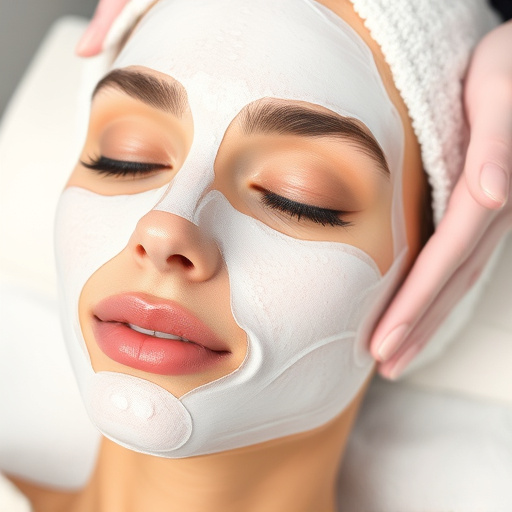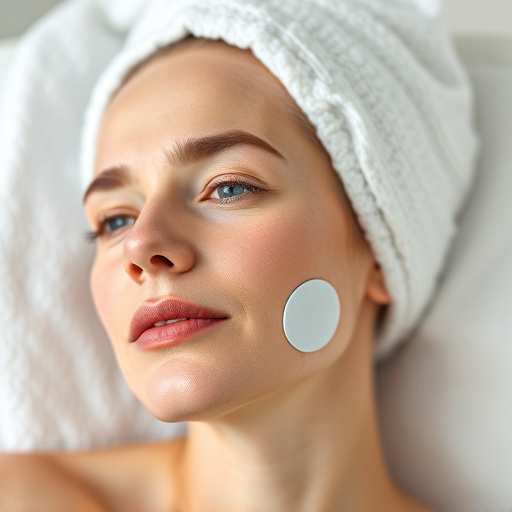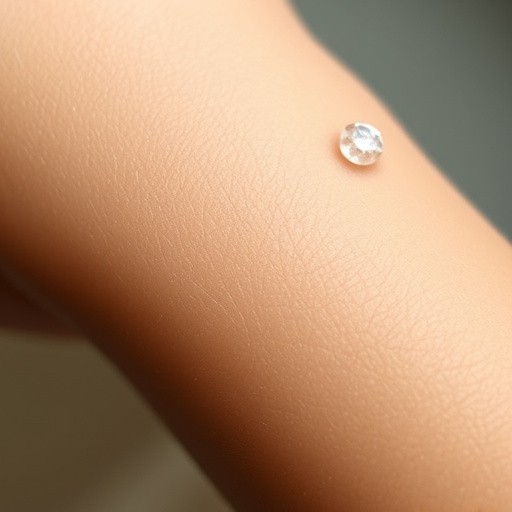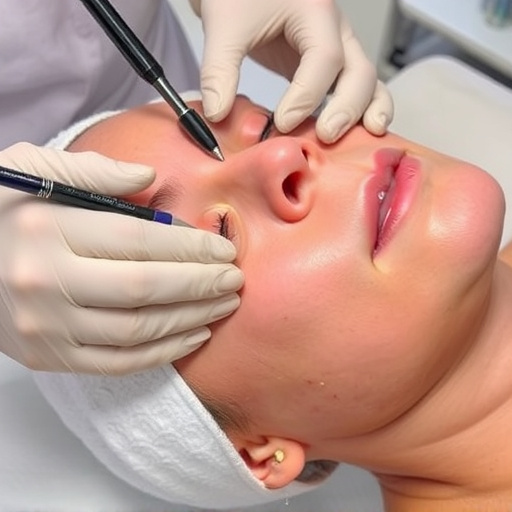Laser hair removal uses light energy to target and destroy hair follicles, preventing unwanted hair growth. Efficacy varies based on skin and hair type, treatment area, and individual physiology, with multiple sessions typically required for optimal results. Professional guidance and at-home care strategies, including gentle skincare and regular exfoliation, optimize results and minimize side effects, leading to lasting reductions in unwanted hair.
Wondering how many laser hair removal sessions you’ll need? This comprehensive guide breaks down everything you need to know. We explore the science behind laser hair removal, delving into the process and its proven efficacy. Understanding factors like skin and hair type, treatment area, and individual results is key to determining your personalized session count. Learn tips to optimize outcomes and maximize your investment in long-lasting, smoother skin.
- Understanding Laser Hair Removal: The Process and Its Efficacy
- Factors Influencing the Number of Sessions Required
- Optimizing Results: Tips for Maximizing Session Outcomes
Understanding Laser Hair Removal: The Process and Its Efficacy

Laser hair removal is a non-invasive procedure that uses concentrated light energy to target and destroy hair follicles, preventing unwanted hair growth. The process involves scanning the skin with a laser beam, which absorbs melanin in the hair shaft, effectively damaging or destroying the follicle. This advanced technology offers a permanent solution to reducing unwanted body hair, making it a popular choice for many seeking long-term results.
The efficacy of laser hair removal varies depending on several factors, including skin and hair type, treatment area, and individual physiology. Typically, multiple sessions are required to achieve optimal results, as lasers only affect active follicles. During each session, the targeted hair shafts become weaker, leading to reduced hair growth over time. In addition to hair reduction, some laser treatments also offer secondary benefits like improved skin texture, reduced redness, and even pore refinement—a bonus effect that contributes to a healthier, brighter complexion.
Factors Influencing the Number of Sessions Required

The number of laser hair removal sessions needed varies greatly from person to person. Several factors influence this outcome and can be broken down into two key categories: individual characteristics and the area being treated. The first category includes skin tone, hair color, and thickness. People with darker skin tones often require more sessions as lasers may not penetrate the pigmented skin as effectively. Lighter hair also poses a challenge since laser treatments rely on targeting melanin in the hair follicle; finer, lighter hairs may not absorb enough energy to initiate the removal process.
The second category focuses on the body area being treated and its unique characteristics. Areas with coarser, thicker hair will generally need more sessions. For instance, treating facial hair might require fewer sessions compared to larger areas like legs or back due to the difference in hair density. Additionally, individuals with rapid regrowth rates may necessitate more frequent treatments to maintain results. Incorporating complementary procedures such as chemical peels or hydrating facials can also impact the number of laser hair removal sessions required, as they help to soften and prepare the skin for optimal treatment outcomes.
Optimizing Results: Tips for Maximizing Session Outcomes

Optimizing Results: Tips for Maximizing Session Outcomes
To get the best results from laser hair removal sessions, it’s important to approach the process with a strategic mindset. Prioritize open communication with your dermatologist or aesthetician throughout each session. They can provide guidance on how to prepare your skin beforehand, such as avoiding certain medications or sun exposure, to enhance effectiveness and minimize potential side effects. Additionally, be consistent with scheduling appointments as recommended by your provider, typically every 4-6 weeks for optimal hair reduction.
Complementing these professional treatments with at-home care can further refine results. Incorporate a gentle cleanser and moisturizer into your daily routine to maintain skin health and prevent irritation. Exfoliation once or twice weekly may also aid in pore refinement and promote smoother, silkier skin. Remember, combining professional laser hair removal with proper skincare practices is key to achieving lasting, dramatic reductions in unwanted hair, transforming your aesthetic treatments experience into a truly effective journey towards smoother, more confident skin.
Laser hair removal is a highly effective method for reducing unwanted hair, but the number of required sessions varies. Understanding individual factors like skin and hair type, as well as the treatment area, is key. By following optimization tips and committing to the full course of treatments, folks can achieve long-lasting reduction with minimal upkeep, making it a game-changer for managing unwanted hair.














